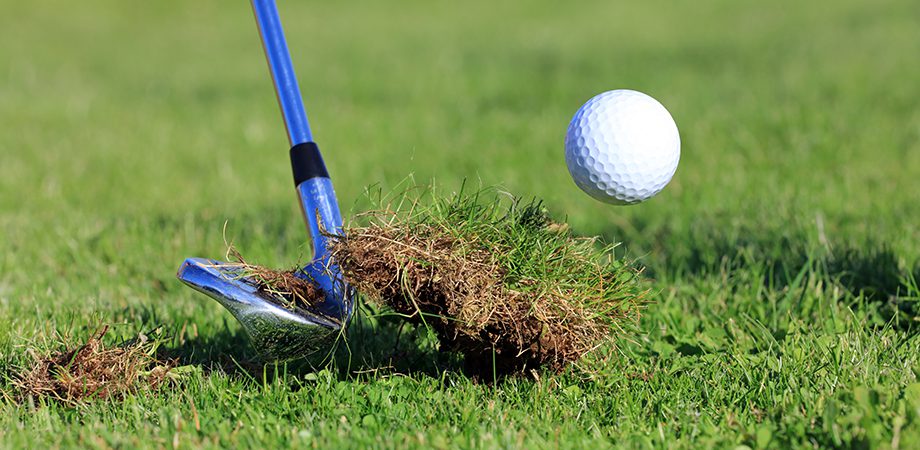Speed Up the Recovery of Divots with These Tips

Divots, Divots Everywhere
Divots need to be treated just like a large newly seeded area. Constant moisture and well-placed/timed feedings will make all the difference in your success.
Here are a few things to implement to help speed up the recovery of your existing divots and those that will soon be flying through the air.
Choosing the Right Seed:
Choosing the correct seed variety is essential. Proceed with caution when selecting some of the newer varieties. They can be capable of producing a large amount of thatch. Utilizing our Advanced Turf Seed Guide is crucial.
Give your seed the best chance for survival by purchasing it with Foliar-Pak’s XCD seed coating. It’s packed with beneficial bacteria, nutrients, wetting agents, Mefenoxam, and Foliar-Pak Armament technology. Although you will still need to nurture the seedlings, using XCD GREATLY increases the germination and success rate. The coating is a bright green color, which helps you know how much seed you have in your divot mixture. That feature alone can help you be more successful. Having the correct amount of seed is crucial.
Additions to the Sand Divot Mix:
Why do my divots never seem to heal during July and August? Overdrying and lack of nutrients. Germination can happen relatively quickly, but if water is not available, the seedling will swiftly die. Plain sand dries out fast and does not do a very good job of holding nutrients.
Two things are essential for quick divot recovery. Adding Nature Safe organic fertilizer and/or granular wetting agents such as Vivax G or Aquadect Flex to your divot mix adds a nutrient source for the seedlings and extends the amount of time the soil profile retains moisture after watering. These specific wetting agents will last 30 days and could significantly boost germination success.
Strategic Feeding:
I say “strategic” feeding because you don’t always have to fertilize your entire tee surface, especially if you have certain areas that require a lot of divot mix.
In order to quickly mature and establish itself enough to handle the vigor of basic maintenance, your new seedling will need to be treated as a “grow in” scenario. Every couple of weeks, lightly fertilize your hardest-hit areas. This will give a constant feed which your new turf will greatly appreciate.
Sometimes, putting out granular fertilizers with heavy play might be too much of a hassle. In between your typical granular applications, it would be easier to hop on your sprayer and make applications of Foliar-Pak Grow-In. Grow-In is a flowable product from Foliar-Pak that is crammed full of everything your turf needs to recover and grow. Regular applications will significantly help the health and vigor of your turf. 6 oz/1000 sq ft weekly will make a huge jump in your turf establishment.
Still No Success?
Even if you closely monitor soil moisture and fertility, you can have less than satisfactory results. Examine the seed in the struggling divots. You might find what was once full of seed, no longer has any to be found. Heavy rains, birds, foot traffic, mower rollers, and wind can easily carry away your precious seed. And we all know the germination rate of “NO seed.” This is easy enough to fix, though. Reapply with XCD-coated seed to those areas and continue your revamped program.
Educate Your Clientele:
Communication is key. Here is an idea to help “involve” your golfers and potentially get them to fill or replace divots more frequently. On your first tee or in a highly visible area, section off a small part of your tee. In this area, ask the worst golfer you can find to rip 16 divots. Section the divots into four sections and mark them with turf marking paint from Advanced Turf Solutions.
Perform this procedure to the divots:
First four divots: Do not repair or replace. Next four divots: Replace. Next four divots: Repair using sand only with no seed. Next four divots: Repair with sand plus seed.
Post a sign next to this section to explain what you are doing and the results you are looking for. When I did this, I frequently found golfers checking out the plots to see which scenario was healing the quickest. The best part of this was, during this experiment, the now-informed golfers drastically increased the number of divots they filled and replaced throughout the rest of the golf course.
Matt Welch
Sales Representative







